Stacked symbologies
An early innovation to get more information into a symbol, used primarily in the vehicle industry, is to simply stack one-dimensional codes on top of each other. The stacked symbologies listed on this page are available.
Click here for a condensed list of stacked symbologies.
Codablock-F
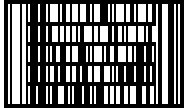
This is a stacked symbology based on Code 128 which can encode ASCII code set data up to a maximum length of 2725 characters.
The width of the Codablock-F symbol can be specified via option2 or the height (number of rows) can be specified via option1. The encoding of GS1 data in Codablock-F symbols is not supported.
Example
The following renders a a 5-row Codablock-F symbol:
createStream({
symbology: SymbologyType.CODABLOCKF,
option1: 5,
}, '11010000100101111011101001000011010100011000101000110001010001100010100011000110011001101100011101011')
Code 16k (EN 12323)
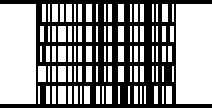
Code 16k uses a Code 128 based system which can stack up to 16 rows in a block. This gives a maximum data capacity of 77 characters (or 154 numerical digits) and includes two modulo-107 check digits.
Code 16k also supports extended ASCII character encoding in the same manner as Code 128.
PDF417 (ISO 15438)
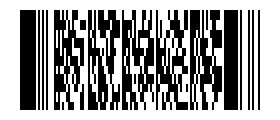
Heavily used in the parcel industry, the PDF417 symbology can encode a vast amount of data into a small space. Encoding up to the ISO standard maximum symbol size of 925 codewords which, at error correction level 0, allows a maximum data size of 1850 text characters (or 2710 digits) is supported.
Security
The amount of check digit information can be specified by setting option1 to the number of codewords (between 0 and 8). The number of codewords used for check information is determined by 2(value + 1)
Note
The default level of check information is determined by the amount of data being encoded. This symbology uses Latin-1 character encoding by default but also supports the ECI encoding mechanism.
Width
The width of the generated PDF417 symbol can be specified by setting option2 to a number between 1 and 30.
Note
A separate symbology ID can be used to encode Health Industry Barcode (HIBC) data which adds a leading + character and a modulo-49 check digit to the encoded data.
Example
The following renders a 5-row Codablock-F symbol:
createStream({
symbology: SymbologyType.CODABLOCKF,
option1: 5,
}, '11010000100101111011101001000011010100011000101000110001010001100010100011000110011001101100011101011')
Compact PDF417
Also known as truncated PDF417. Options are the same as for PDF417 above.
MicroPDF417 (ISO 24728)

A variation of the PDF417 standard, MicroPDF417 is intended for applications where symbol size needs to be kept to a minimum. 34 predefined symbol sizes are available with 1 to 4 columns and 4 to 44 rows.
MicroPDF417 symbol can hold up to 250 alphanumeric characters (or 366 digits).
Error correction capacity
The amount of error correction used is dependent on symbol size.
Symbol Size
Like PDF417, the number of columns used can be determined by specifying option2.
Note
This symbology uses Latin-1 character encoding by default but also supports the ECI encoding mechanism.
Note
A separate symbology ID can be used to encode Health Industry Barcode (HIBC) data which adds a leading + character and a modulo-49 check digit to the encoded data.
GS1 DataBar-14 Stacked (ISO 24724)

A stacked variation of GS1 DataBar-14, this symbol requires the same type of input.
Note
- The height of this symbol is fixed.
- The data is encoded in two rows of bars with a central finder pattern.
- This symbol can be generated with a two-dimensional component to make a composite symbol.
GS1 DataBar-14 Stacked Omnidirectional (ISO 24724)
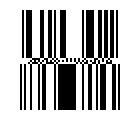
Another stacked variation of GS1 DataBar-14, this symbol requires the same type of input.
Note
- The data is encoded in two rows of bars with a central finder pattern.
- This symbol can be generated with a two-dimensional component to make a composite symbol.
GS1 DataBar Expanded Stacked (ISO 24724)
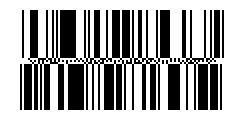
A stacked variation of the GS1 DataBar Expanded symbol for smaller packages. The input requirement is the same as for GS1 DataBar Expanded.
Width
The width of the symbol can be altered by setting option2 to the desired width.
Note
This symbol can be generated with a two-dimensional component to make a composite symbol. For symbols with a 2D component, the number of columns must be at least 2.
Example
createStream({
symbology: SymbologyType.EANX_CC,
option1: 1,
primary: '331234567890'
}, '[99]1234-abcd')
Code 49
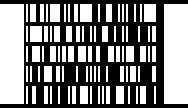
Developed in 1987 at Intermec, Code 49 is a cross between UPC and Code 39. It it one of the earliest stacked symbologies and influenced the design of Code 16K a few years later. It supports full 7-bit ASCII input up to a maximum of 49 characters or 81 numeric digits. GS1 data encoding is also supported.